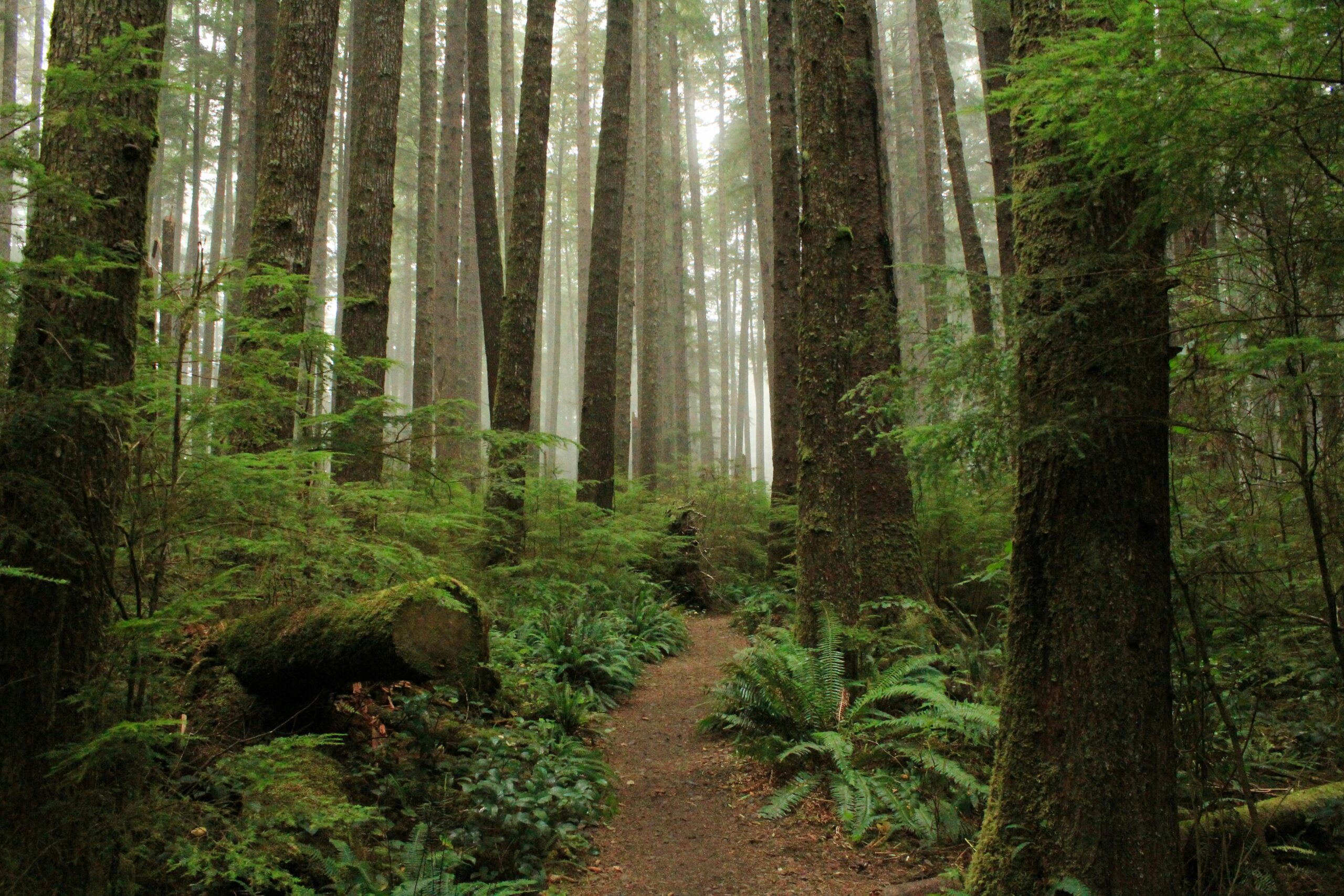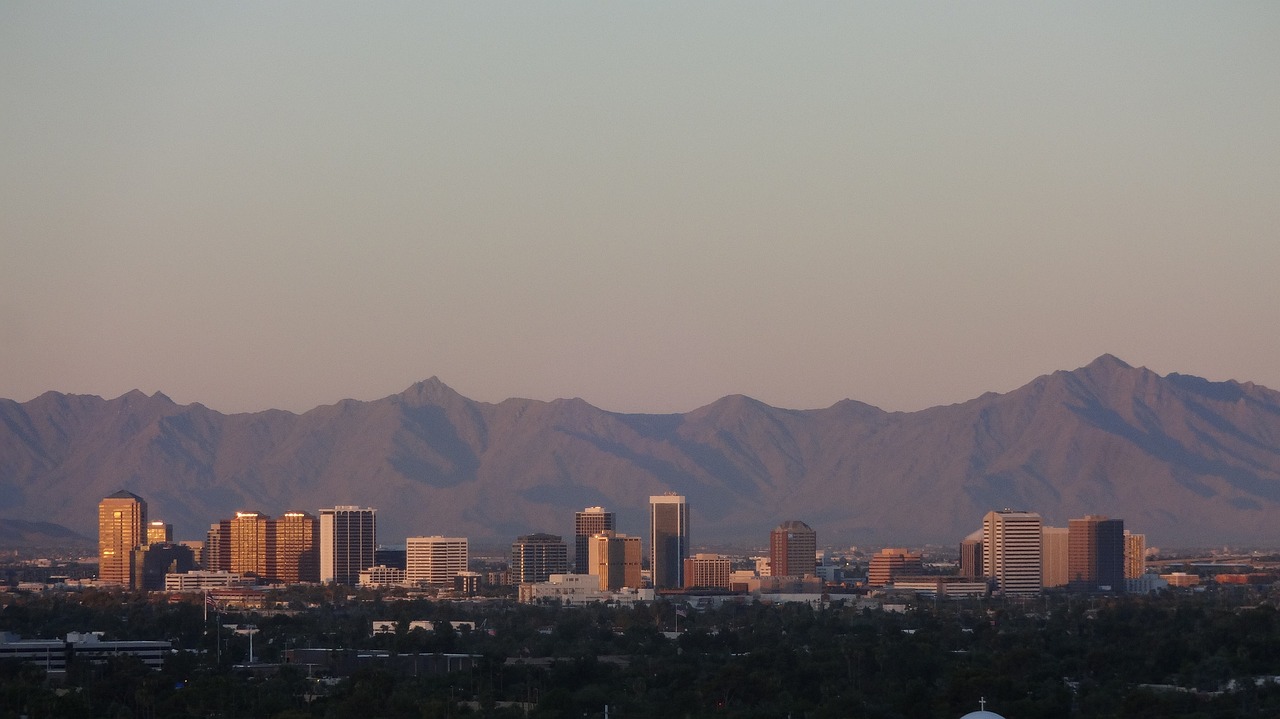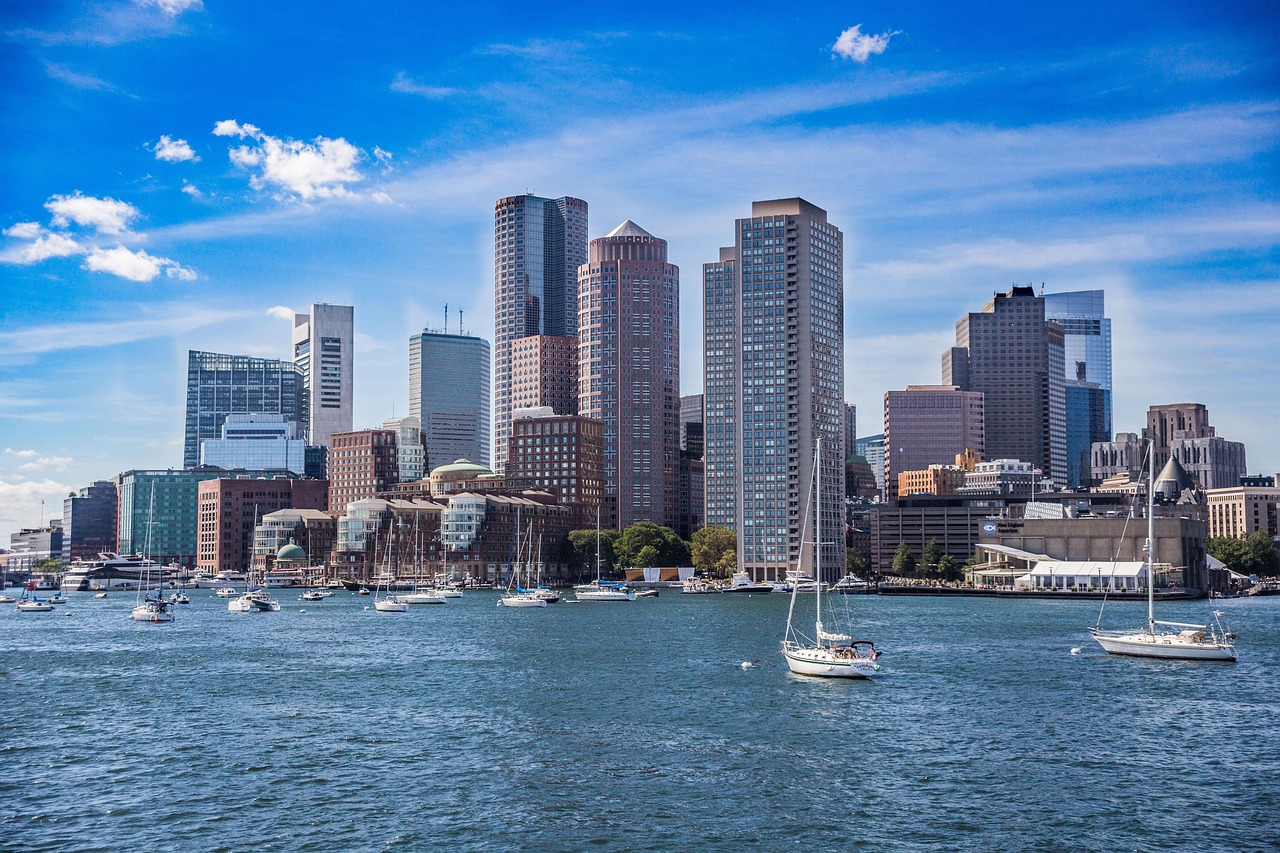Are you looking for an adventure in nature? Olympic National Park is a magnificent place with stunning views. This blog will guide you through its beauty and how to enjoy it. Keep reading, won’t you?
Key Takeaways
- Olympic National Park has many different areas like rainforests, beaches, and mountains. You can see animals like deer and whales there.
- The park offers fun activities such as hiking, kayaking, and climbing Mount Olympus. There are also special places to visit like Hurricane Ridge and Ruby Beach.
- People work hard to keep the park safe for plants and animals. Projects like the Elwha Ecosystem Restoration help nature heal after changes made by humans.
- The best time to go is in summer when it’s warm, but spring and fall are less crowded. Remember to bring things you need for hiking or exploring.
- You have to be careful on trails because of weather or wildlife. It’s good to have a map since some places might not have phone service.
Key Features of Olympic National Park

Olympic National Park boasts diverse ecosystems, glacier-clad mountains, rugged coastlines, and temperate rainforests. These natural wonders make the park an ideal destination for outdoor adventures and cultural experiences.
Diverse Ecosystems
Olympic National Park is a place with many different kinds of environments. It has everything from mountains covered in ice to deep green forests. These areas are home to lots of plants and animals, some that you won’t find anywhere else.
In the park, you can walk through rainforests with tall trees and go to beaches where the ocean meets the land. You might see deer in the woods or whales near the coast. This mix makes every visit full of surprises.
Glacier-Clad Mountains
From the diverse ecosystems, we move to the majestic glacier-clad mountains that define Olympic National Park. These peaks cover with ice and snow, offering stunning views for miles.
The park is home to Mount Olympus, which rises 7,980 feet above sea level. This mountain is a magnet for climbers seeking adventure.
Mount Olympus and its surrounding peaks make up one of the most dramatic landscapes in Washington State. They are part of why this park holds a special place in the hearts of nature lovers and adventurers alike.
Here, glaciers slowly carve through rock over centuries, shaping the breathtaking scenery visitors enjoy today.
Rugged Coastlines
Olympic National Park’s coastline stands out with its raw beauty. The Pacific Ocean hits the shore, making waves crash onto rocky beaches. Tall cliffs and sea stacks dot the landscape.
Here, travelers can see the wilderness coast in all its glory.
This area is perfect for those who love scenic views and wild places. You won’t find crowded beaches here, just nature at its most powerful. Next up are temperate rainforests, another must-see in Olympic National Park.
Temperate Rainforests
The temperate rainforests in Olympic National Park are lush and vibrant, featuring dense vegetation and a variety of wildlife. These rainforests are one of the few remaining temperate rainforests in the world, showcasing towering trees such as Sitka spruce, western hemlock, and Douglas fir.
The Hoh Rain Forest is a must-visit within the park, with an annual rainfall averaging 140-170 inches creating a verdant environment ripe for exploration. Visitors can wander along moss-draped trails and marvel at colossal ancient trees that have stood for hundreds of years.
The unique ecosystems provide an exceptional opportunity to witness nature’s beauty up close.
In these rainforests, visitors can encounter diverse species like elk, black bears, and banana slugs amidst the thick canopy providing sanctuary for numerous plant and animal species.
With its enchanting atmosphere and picturesque scenery around every corner, exploring Olympic National Park’s temperate rainforests offers an unforgettable adventure into America’s stunning natural landscapes.
Popular Destinations Within the Park
Visiting Olympic National Park offers a chance to explore unique places like Hurricane Ridge, Hoh Rain Forest, Ruby Beach, and Lake Crescent. Discover the park’s diverse beauty and natural wonders firsthand.
Read More….
Hurricane Ridge
Hurricane Ridge is a must-see spot in Olympic National Park. It offers breathtaking views of the snow-capped mountains and lush meadows. It’s perfect for hiking, wildlife watching, and even snowshoeing in the winter months.
The area receives an average of 400 inches of snow annually, making it a paradise for winter sports enthusiasts.
The Hurricane Ridge Visitor Center is open year-round, with exhibits on local flora and fauna. Additionally, there are ranger-led programs providing insights into the park’s ecology.
In summer, the wildflower displays are stunning with over 300 species adorning the alpine landscapes. For those seeking adventure or just wanting to experience nature’s beauty up close, Hurricane Ridge won’t disappoint.
Hoh Rain Forest
Covering about 24 miles within Olympic National Park, the Hoh Rain Forest is an iconic destination. It receives around 140 inches of rain every year, making it one of the lushest places in North America.
The forest boasts old-growth trees, some towering over 300 feet and dating back 500 years. As you walk through this enchanting realm, you’ll encounter unique plants like mosses, ferns, and epiphytes thriving on branches.
The Hoh Rain Forest offers a variety of trails for hiking enthusiasts. One popular trail is the Hall of Mosses Trail which gives visitors an up-close look at the moss-draped maples and spruces.
Keep your eyes peeled for wildlife – elk sightings are common here especially during the spring and fall months when they come out to graze in the meadows near the visitor center.
Ruby Beach
Ruby Beach is a rugged coastal gem on the Olympic Peninsula. With its sea stacks, tide pools, and driftwood-strewn shores, it’s a photographer’s dream. The beach offers stunning views of the Pacific coastline and provides an excellent opportunity for wildlife watching, particularly during the winter months when migrating gray whales can often be spotted from the shore.
The unique geological formations and expansive seascapes make Ruby Beach one of the most picturesque spots in Olympic National Park.
The beach is accessible via a short trail from Highway 101, making it an ideal stop for travelers exploring the park. Visitors can explore tidal pools teeming with marine life or simply unwind amidst the serene natural beauty that defines Ruby Beach.
Lake Crescent
Lake Crescent is a must-see destination within Olympic National Park. This stunning glacially-carved lake offers clear blue waters and opportunities for swimming, kayaking, and fishing.
The surrounding lush forests and the nearby Marymere Falls hike provide picturesque scenery for nature enthusiasts. Lake Crescent Lodge, established in 1915, adds a touch of history to this beautiful spot.
The lake is known for its crystal-clear waters which are some of the clearest in North America. Formed by glaciers around 8,000 years ago, Lake Crescent reaches depths of up to 624 feet (190 meters).
The pristine quality of the water makes it an excellent place for divers and scientists studying underwater life. Whether you’re captivated by its natural beauty or interested in outdoor activities like hiking or boating, Lake Crescent gives visitors a memorable experience amidst breathtaking surroundings.
Recreational Activities
Explore the park through hiking trails, home to diverse wildlife and stunning views. Get closer to nature with kayaking along the coast, or challenge yourself with a climb up Mount Olympus for an adrenaline-pumping adventure.
Hiking and Backpacking
Hiking and backpacking in Olympic National Park offer stunning trails through diverse ecosystems. With over 611 miles of trails, hikers can explore the park’s lush rainforests, subalpine meadows, and rugged coastline.
The Hoh River Trail takes adventurers through the iconic Hoh Rain Forest with its ancient trees and abundant wildlife. For a more challenging trek, the 18-mile round trip to Mount Ellinor rewards hikers with breathtaking panoramic views of the Olympic Peninsula.
In addition to hiking, backpackers can find remote spots for overnight camping throughout the park. Wilderness camping permits are required for overnight stays in specific areas, ensuring minimal impact on these pristine landscapes while offering intimate experiences with nature.
Wildlife Watching
Visitors to Olympic National Park can expect a diverse array of wildlife to observe. The park is home to over 300 species of birds, including the majestic bald eagle and colorful spotted owl.
Elk roam freely in the meadows, while black-tailed deer and mountain goats are often seen on the slopes. Marine animals such as sea otters, seals, and whales inhabit the coastal waters.
For those interested in smaller creatures, there are countless opportunities to spot amphibians and insects within the lush rainforests.
The park’s varied ecosystems provide habitats for an impressive range of wildlife, making it an ideal destination for nature enthusiasts and photographers alike. Whether you’re watching eagles soar overhead or observing tide pool inhabitants along the rugged coastline, Olympic National Park offers countless opportunities for unforgettable wildlife encounters.
Kayaking and Paddleboarding
Discover the beauty of Olympic National Park from a new perspective by taking to the water on a kayaking or paddleboarding adventure. With its rugged coastline and serene lakes, there are plenty of opportunities to explore these pristine waters.
Whether you’re navigating through the peaceful waters of Lake Crescent or riding the waves along the Pacific Coast, there’s an aquatic experience for everyone. Keep your eyes peeled for seals, otters, and even whales while paddling in these rich marine environments.
For those seeking calm and serenity, paddling through the crystal-clear waters amidst ancient forests is an unparalleled experience that defines Olympic National Park’s natural allure.
The park offers a true sense of tranquility and adventure as you immerse yourself in its breathtaking landscapes from a unique vantage point on a kayak or paddleboard.
Mount Olympus Climbing Adventures
Mount Olympus, the highest peak in Olympic National Park at 7,980 feet, offers an exhilarating climbing adventure for outdoor enthusiasts. The climb to the summit of Mount Olympus is a challenging expedition that typically takes experienced climbers multiple days to complete.
It’s renowned for its rugged terrain and breathtaking views of the surrounding glaciers and wilderness. Permits are required for all overnight stays in the backcountry, including camping on Mount Olympus during climbing expeditions.
Climbers embarking on this journey should be well-prepared with essential gear such as ropes, harnesses, ice axes, crampons, helmets, and proper clothing to navigate the glacier-clad landscape safely.
Due to its demanding nature, climbers need to be physically fit and possess strong mountaineering skills. Aspiring climbers must also consider unpredictable weather conditions and rapidly changing terrains when planning their ascent up Mount Olympus.
Conservation and Ecology
Protecting unique habitats and restoring ecosystems are top priorities at Olympic National Park. Preservation efforts contribute to the sustainability of diverse plant and animal species in this wilderness area.
Protection of Unique Habitats
Olympic National Park hosts a diverse array of ecosystems, such as temperate rainforests and rugged coastlines. The park is committed to safeguarding these unique habitats, ensuring the continued existence of its rich biodiversity.
Efforts include conservation programs for endangered species like the marbled murrelet and northern spotted owl, crucial to maintaining balanced ecosystems.
The National Park Service actively manages human impacts on delicate areas through trail maintenance and visitor education initiatives. Protective measures aim to preserve natural landscapes while allowing visitors to appreciate and learn from these environments without causing harm.
Elwha Ecosystem Restoration Project
After the protection of unique habitats, Olympic National Park is also home to the Elwha Ecosystem Restoration Project. This ambitious undertaking aimed to restore the natural habitat of the Elwha River and its surroundings after two dams were removed in 2011 and 2014.
The removal of these dams has allowed salmon to migrate back upriver for the first time in over a century, revitalizing essential fish populations and supporting wildlife that depend on them.
The project involves replanting native vegetation, restoring wetlands, and monitoring wildlife recovery to ensure the ecosystem’s health continues to improve. Visitors can witness this extraordinary ecological renewal by exploring areas like Glines Canyon Overlook or taking part in ranger-led programs discussing the restoration efforts.
Tips for Visiting Olympic National Park
Plan your visit during the spring or summer months when the weather is most favorable. Pack essential gear such as sturdy hiking shoes, rain gear, and a map for exploring the diverse trails and roads within the park.
Best Times to Visit
Summer, from late June to early September, is the best time to visit Olympic National Park. During this period, the weather is usually pleasant with warm temperatures and minimal rainfall.
The subalpine meadows are in full bloom, making it an ideal time for hiking and exploring the diverse ecosystems. However, it’s also the busiest season, so expect more crowds at popular destinations like Hurricane Ridge and Hoh Rain Forest.
To avoid the peak tourist influx yet still enjoy good weather, consider visiting during late spring or early fall when the park is less crowded but still offers favorable conditions for outdoor adventures.
The shoulder seasons of late spring (May) and early fall (September) provide a balance of manageable crowds and enjoyable weather. These times offer opportunities for wildlife watching as animals become more active before winter sets in.
Keep in mind that some higher elevation trails may have snow until mid-July while autumn brings stunning foliage to the rainforests and mountainsides throughout October.
Essential Gear for Exploration
Exploring Olympic National Park calls for essential gear to make the most of your adventures. Start with sturdy and comfortable footwear for hiking through diverse terrain, such as the rainforests or along the rugged coastline.
Bring a reliable backpack to carry essentials like water, snacks, and a first-aid kit. Consider packing layers of clothing suitable for unpredictable weather in the mountains and rainforests.
Don’t forget to bring a map or GPS device to navigate trails effectively. Additionally, bear spray can be vital protection when venturing into wilderness areas known for wildlife encounters.
And finally, equip yourself with a quality camera to capture stunning moments during your exploration in this picturesque national park.
Navigating Trails and Roads
Trails and roads in Olympic National Park offer diverse outdoor experiences. The park has over 600 miles of trails, from easy walks to challenging backcountry routes. For those who prefer driving, the park’s main road provides access to various attractions like Hurricane Ridge, Hoh Rain Forest, and Ruby Beach.
Most trails are well-marked with clear signs indicating directions and distances. It’s important to check trail conditions before planning a hike due to potential hazards such as snow or fallen trees blocking paths.
Visitors should be aware that some areas may have limited cell phone reception, so it’s wise to carry a map and compass for navigation. Additionally, during winter months certain roads may close because of snow accumulation or hazardous conditions.
It is advisable to check road status ahead of time for a safe visit.
Conclusion
Conservation efforts are underway to protect the unique habitats within the park, ensuring that future generations can also enjoy its natural beauty.
FAQs
1. What is Olympic National Park known for?
Olympic National Park is famous for its stunning landscapes, diverse ecosystems, and beautiful coastlines. It has mountains, lush forests, and unique wildlife that attract many visitors every year.
2. When is the best time to visit Olympic National Park?
The best time to visit Olympic National Park is during the summer months, from June to September. The weather is warm and dry then, making it perfect for hiking and exploring the park’s natural beauty.
3. What activities can I do in Olympic National Park?
You can enjoy a variety of activities in Olympic National Park! Hiking on scenic trails, camping under the stars, birdwatching among trees, or even exploring tide pools along the coastline are all popular options.
4. Are there any entrance fees for visiting Olympic National Park?
Yes, there are entrance fees for visiting Olympic National Park. You can pay per vehicle or purchase an annual pass if you plan to visit multiple times throughout the year.







Leave a Reply